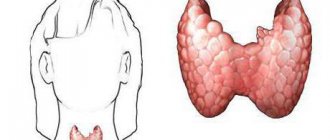Meningoencephalitis accounts for approximately 20% of all neuroinfections. For newborns, this infection is characterized by a high frequency of neurological pathologies and deaths. This is often due to the failure of the immune system and the inability to independently fight pathogenic microorganisms.
Meningoencephalitis is a severe infectious and inflammatory disease with primary damage to the membranes and substance of the brain. Children are characterized by a high incidence of complications that can lead to lifelong disability and even death of the child.
The disease begins acutely , with the sudden onset of symptoms. Characterized by rapid development. This disease is quite often associated with the transmission of infection from the mother to the fetus, and then to the newborn as it passes through the birth canal.
Kinds:
- Meningitis. Affects the arachnoid and soft membranes of the brain.
- Pachymeningitis. Damage to the dura mater.
- Arachnoiditis. Damage mainly to the arachnoid membranes. Occurs very rarely.
Types:
- Spinal . The pathological process spreads to the spinal cord.
- Cerebral . The pathological process is located in the brain.
Shapes:
- Primary . With this form of pathology, the source of inflammation is located immediately in the brain.
- Secondary . Infection enters the brain from a source located in some other organ.
After the pathogen has entered the body, inflammation occurs and perivascular infiltrates . They, in turn, lead to impaired blood circulation in the brain and ischemia. Secretion of cerebrospinal fluid accelerates. In this regard, intracranial pressure increases. Irritation of the membranes of the brain occurs.
Main symptoms of the disease:
- Unbearable headache.
- Indomitable vomiting, constant regurgitation.
- Increased body temperature.
- Stiff neck.
- Convulsive attacks, loss of consciousness.
- Paresis, disturbances in the movement of the eyeballs.
- Skin rash.
- Refusal to eat, frequent crying.
- Bulging of the fontanel.
Causes
Meningoencephalitis has causes:
- infectious;
- infectious-allergic;
- toxic.
The primary type of the disease appears in the brain. This is observed due to the penetration of various viruses. A secondary disease is considered to be the progression of infections, such as herpes.
The presence of such a disease complicates the treatment of other diseases. The reason for this is a decrease in the body’s protective effect due to disruptions in the immune system. This disease occurs due to chronic diseases of the ear, nose and throat. Such ailments include:
- purulent otitis;
- sinusitis;
- caries.
There are rheumatic and post-vaccination types of illness, when a reaction to the vaccine is observed. The danger of the disease is that it can lead to death and negative changes in the brain. If there are no chronic illnesses, then the risk of morbidity is reduced.
Symptoms
Signs of meningoencephalitis are due to the presence of significant intoxication of the body and disruption of brain function. Each form of the disease has its own symptomatic picture.
Common manifestations are characteristic of meningococcal meningoencephalitis. Among the symptoms:
- deterioration of general well-being – headaches, the patient gets chills, vomits, hyperthermia occurs, convulsions appear, fear of light, hyperesthesia is observed;
- altered consciousness - the patient wanders, he is inhibited;
- the muscles of the back of the head are rigid;
- coordination of movements is impaired;
- reflexes are characterized by asymmetry.
Signs
In the presence of meningoencephalitis, the symptoms can be different, it all depends on the cause of the development of the disease and its course. After the infection enters the body, an incubation period begins, during which the disease becomes strong, and the person begins to fight it. The following symptoms may appear:
- headache;
- prostration;
- lethargy;
- loss of appetite;
- muscle aches.
The incubation period lasts depending on the health and activity of the immune system. Often it lasts several hours, and then there will be an acute stage. Then fever, chills, runny nose, and cough appear. When an infection enters the brain, its rapid damage begins. Symptoms can be catarrhal, when psychosis and hallucinations are observed. Sleep disturbances, insomnia, and drowsiness also occur.
Then meningeal syndrome occurs, which causes damage to the membranes of the brain. Then nausea and headaches appear. Impairment of visual functions and organs of vision is possible. There may be difficulties with the vestibular system.
There are bulbar disorders, in which speech and swallowing functions are impaired, as well as interruptions in the activity of the heart and respiratory organs. They are among the most dangerous signs, since such defects can cause death.
If the disease is treated in time, there will be improvements in health. The doctor will prescribe effective recovery.
Often, after an illness, symptoms of a disease of the nervous system appear, which is why the person becomes disabled.
Encephalitic meningitis - what is it?
Encephalitic meningitis is an infectious disease accompanied by inflammation of the brain and its membranes . This disease is rightly considered one of the most dangerous of those caused by infection.
According to the classification of the International Health Organization, encephalitic meningitis is called meningoencephalitis. In medicine, these concepts are equivalent. With meningoencephalitis, two inflammatory processes occur in parallel in the body: in the brain tissue and the membranes.
Types of ailments
For meningoencephalitis, treatment depends on the type of disease:
- herpetic meningoencephalitis: occurs as an independent disease, but can be associated with a viral infection;
- influenza hemorrhagic: appears due to the flu, with the disease there is an increase in temperature, chills, loss of consciousness;
- amoebic: the cause of the disease is infection from freshwater bodies, the pathology is considered dangerous;
- viral meningoencephalitis: the disease develops due to the tick-borne encephalitis virus, which can be caught from the milk of sick animals;
- brucellosis: damage to the soft membrane of the brain occurs, which causes paresis and paralysis, and deterioration of mental health;
- tuberculous: usually appears in the presence of tuberculosis, characteristic symptoms are apathy, irritability, poor sleep;
- purulent meningoencephalitis: the disease is caused by meningococci, staphylococci, which affects the lining of the brain, so the disease may be called “meningococcal”;
- chickenpox: occurs in children due to chickenpox, symptoms include apathy, dizziness, and convulsions.
Every disease is dangerous and contagious, but if effective procedures are followed, then the adverse consequences are not terrible. In addition to these types of illness, there are serous and bacterial ones. Each of them is dangerous with complications, so timely treatment is required.
Meningoencephalitis in newborns: causes and consequences
Meningoencephalitis accounts for approximately 20% of all neuroinfections.
For newborns, this infection is characterized by a high frequency of neurological pathologies and deaths. This is often due to the failure of the immune system and the inability to independently fight pathogenic microorganisms. Meningoencephalitis is a severe infectious and inflammatory disease with primary damage to the membranes and substance of the brain. Children are characterized by a high incidence of complications that can lead to lifelong disability and even death of the child.
The disease begins acutely , with the sudden onset of symptoms. Characterized by rapid development. This disease is quite often associated with the transmission of infection from the mother to the fetus, and then to the newborn as it passes through the birth canal.
Kinds:
- Meningitis. Affects the arachnoid and soft membranes of the brain.
- Pachymeningitis. Damage to the dura mater.
- Arachnoiditis. Damage mainly to the arachnoid membranes. Occurs very rarely.
Types:
- Spinal . The pathological process spreads to the spinal cord.
- Cerebral . The pathological process is located in the brain.
Shapes:
- Primary . With this form of pathology, the source of inflammation is located immediately in the brain.
- Secondary . Infection enters the brain from a source located in some other organ.
After the pathogen has entered the body, inflammation occurs and perivascular infiltrates . They, in turn, lead to impaired blood circulation in the brain and ischemia. Secretion of cerebrospinal fluid accelerates. In this regard, intracranial pressure increases. Irritation of the membranes of the brain occurs.
Main symptoms of the disease:
- Unbearable headache.
- Indomitable vomiting, constant regurgitation.
- Increased body temperature.
- Stiff neck.
- Convulsive attacks, loss of consciousness.
- Paresis, disturbances in the movement of the eyeballs.
- Skin rash.
- Refusal to eat, frequent crying.
- Bulging of the fontanel.
Causes
- Bacterial meningoencephalitis. The causative agents of the pathology can be streptococci, staphylococci, gram-positive and gram-negative microorganisms, meningococci, pneumococci, treponema pallidum.
- Viral meningoencephalitis. The causes may be tick-borne encephalitis virus, cytomegalovirus, herpes virus, adenovirus, influenza viruses, measles, rubella, Epstein-Barr, Coxsackie, chickenpox, HIV infection, mumps virus, enteroviruses.
- Fungal meningoencephalitis.
- A disease caused by protozoan microorganisms .
For example, toxoplasma, malarial plasmodium. - Autoimmune meningoencephalitis. When certain malfunctions occur, the body begins to produce antibodies against its own brain cells and tissues.
- Tuberculous . Develops against the background of pulmonary tuberculosis. The causative agent is mycobacterium (Koch bacillus).
- Associations of several pathogens.
With delayed diagnosis and untimely treatment of this disease, there is a risk of developing serious consequences and multiple complications.
Possible consequences
- Swelling of the brain due to the accumulation of exudate, which can cause displacement of brain structures. Herniation of the brainstem into the foramen magnum may occur. Swelling of the brain stem can cause death in the newborn.
- Purulent meningoencephalitis.
- Increased intracranial pressure . Signs: tension, bulging and pulsation in the area of the large fontanel, throwing back of the head, a piercing and monotonous cry.
- Sepsis, infectious-toxic shock. Due to the proliferation of bacteria and the entry of their toxins into the bloodstream.
- Kidney failure.
- Swallowing disorder.
- Respiratory dysfunction : breathing is shallow and frequent.
- From the heart: arrhythmic, rare sounds.
- Epilepsy.
- Paresis of limbs and paralysis.
- Facial asymmetry.
- Postnecrotic cysts of the brain . Often occurs after a history of herpes viral meningoencephalitis.
- Petrifications and cysts in the thalamus.
- Hemorrhages into the brain parenchyma, disseminated intravascular coagulation syndrome.
- Extensive intraventricular hemorrhages, atrophy of the brain substance.
- Optic nerve atrophy, conjunctivitis, anisocoria, inflammation of the choroid.
- Development of asthenic and neurotic syndromes.
- Loss of sensation, hearing and vision.
- Brain abscess.
- Deafness.
- At an older age, there may be speech disorders, delayed mental and mental development, and dementia.
- Coma with fulminant course of the disease.
- Widespread skin necrosis.
- Ischemic stroke, as a result of prolonged increase in intracranial pressure.
Recommendations
- If even minor symptoms of the disease appear, immediately seek help from a pediatrician or infectious disease specialist for timely diagnosis and adequate treatment.
- After suffering from meningoencephalitis, children should be regularly observed by their attending physician, registered at the dispensary and follow all recommendations.
- In some cases, after suffering a viral or bacterial disease, sanatorium treatment is necessary.
- It is necessary to monitor the newborn’s sleep and rest patterns and regularity of nutrition.
- You need to walk in the fresh air every day.
- After the birth of a child, immunoprophylactic measures should be taken.
- Be sure to treat foci of infection.
- If you come into contact with a sick person, take a course of antibacterial therapy.
conclusions
Meningoencephalitis is a fairly serious and dangerous disease that poses a threat to the child’s body. The mortality rate of newborns without treatment reaches 100% . But with timely diagnostic measures and properly selected therapy, there is a chance to avoid negative consequences and restore the child’s health.
Source: https://plusiminusi.ru/meningoencefalit-u-novorozhdennyx-prichiny-i-posledstviya/
The appearance of complications
The consequences of viral meningoencephalitis are considered common. With weakened immunity or late diagnosis and treatment, complications manifest themselves in the form of paralysis, paresis, and epilepsy. And these diseases have many adverse consequences.
With the herpetic form of the disease, cysts and difficulties in mental development may appear. Complications manifest themselves in brain malfunctions. The further recovery of a person depends on the extent of the nervous system failures. When a child suffers an illness at a young age, it affects mental and mental health. Meningoencephalitis in newborns will be complicated if there is a tendency to generalized forms.
Meningoencephalitis: classification
Today, neurologists divide meningoencephalitis into various types according to several criteria: etiology, nature of morphological changes and type of course. Based on etiology, the following types of encephalitis are distinguished:
- Viral - pathogens can be influenza viruses, herpes simplex, measles, rabies, cytomegalovirus, enteroviruses. The serous nature of inflammatory changes predominates;
- Bacterial - pathogens can be strepto-, meningo-, pneumococci, Klebsiella, Haemophilus influenzae. The inflammation has a purulent nature of inflammatory changes;
- Protozoan - extremely rare. Infectious agents are amoebas, toxoplasma and other protozoa;
- Fungal – mainly observed in immunocompromised individuals. Can be diagnosed as part of neuroAIDS.
Disease in children
Although the disease can appear at different ages, children still suffer more from it. This most often occurs in spring and summer, when ticks that carry the disease are active. Children spend a long time walking outside, and therefore insect bites are not uncommon. Because of this, it is important to monitor the skin and well-being of the child.
The complexity of meningoencephalitis depends on the baby’s age, health status, and implementation of effective measures. In boys, the disease is observed more often than in girls. Timely and professional treatment is important, otherwise death is inevitable.
To protect children from the disease, you should choose closed clothing for a walk. It is necessary to regularly examine the child’s body for tick bites. If any signs are found, professional help is needed. Based on the tests, the doctor will prescribe suitable medications.
Additional facts
The term “meningoencephalitis” refers to simultaneous inflammatory damage to the membranes (“meningea”) and substance (“encephalon”) of the brain. Combined inflammation can occur initially or be the result of the spread of a pathological process. With secondary involvement of the medulla, meningoencephalitis is a complication of meningitis, and with the transition of inflammation to the cerebral membranes, it is a complication of encephalitis. Due to the immaturity of the blood-brain barrier and immune system, young children are most susceptible to the disease. The pathology is widespread. Some etiological forms (mosquito, tick-borne meningoencephalitis) are endemic and seasonal.
Meningoencephalitis
Diagnostics
To make an accurate diagnosis, the doctor conducts diagnostics. It involves the following activities:
- blood analysis;
- spinal tap;
- electroencephalogram;
- MRI;
- biopsy.
Such procedures should be performed by a professional. The diagnosis is clarified using fundus examination, echoencephalography, and tomography. In case of complications, the patient is offered treatment in a hospital.
Features of treatment
Diagnosis is made using a spinal tap. The membrane of the spinal cord is punctured and fluid is withdrawn. The pressure at which the liquid appears outside is important. If the indicator is high, then this indicates the presence of the disease. The analysis determines the causative agent of the disease, as well as the infectious process.
By drawing fluid, intracranial pressure is reduced, which alleviates symptoms. After passing the examination, an effective treatment method is determined. Doctors prescribe medications necessary to eliminate inflammation, suppress infection, and strengthen the immune system:
- antibiotics;
- antiviral drugs;
- antifungal and antihistamine medications.
Sometimes antihistamines are chosen. Symptomatic recovery is prescribed for each patient individually, since everyone’s disease progresses differently. Rehabilitation lasts quite a long time, everything is determined by the degree of the disease. Neuroprotectors, antioxidants, and means to improve blood circulation can be used. Vitamins B and E and medications with a calming effect are needed.
In addition to drug treatment, physiotherapy and reflexology are used. It is important for all people who have had meningoencephalitis to visit a neurologist. This will allow you to monitor your health, as well as consult on compliance with preventive measures. Spa treatment helps.
Description
Meningoencephalitis.
A neuroinfectious disease that occurs with combined damage to the cerebral substance and membranes. Manifests itself with infectious, meningeal, variable focal symptoms. Diagnosed as a result of a neurological examination, cerebral MRI/CT, cerebrospinal fluid examination, and laboratory diagnostics aimed at searching for the causative agent. Treatment is based on etiotropic therapy (antibiotics, antiviral, antimycotic, antiparasitic pharmaceuticals) in combination with pathogenetic, symptomatic agents.
ethnoscience
Traditional medicine helps in the initial stages of the disease. The following proven recipes are suitable for this:
- Valerian roots must be crushed, poured with alcohol (1 glass), and let the product infuse: it is used for rubbing;
- harmala seeds (10 pieces) are crushed, and then they must be taken with boiled water;
- tincture of Rhodiola rosea (20 drops) is taken before meals, only first the product is diluted in water (50 ml);
- peony roots (50 g) should be ground, add vodka (100 g), and let the product infuse: you should take it 50 drops after meals;
- black poplar buds (50 g) are poured with boiling water (200 g), after which the composition is infused: you need to take the product 3 sips before meals.
Traditional medicine cannot replace full treatment, so they must be taken as a supplement. The doctor will tell you which recipe is best to use.
Prevention
The disease is prevented through vaccination. Residents where infested insects live should wear protective clothing. Special overalls, nets, and hats are suitable for this.
If you were outdoors, you need to examine your body for bites. This will allow you to detect and eliminate the tick in time. Prevention of viral forms of the disease is the same as with intestinal infections. If secondary symptoms are present, diagnosis and effective treatment of infectious diseases is necessary. Thanks to careful attention to health, complications can be prevented.
Forecast
Timely initiation of etiotropic therapy increases the chances of recovery, but the outcome of the disease depends on the etiology, course, age of the patient, and the state of his immune system. Fulminant meningoencephalitis has the highest mortality rate. Most surviving patients experience residual phenomena: paresis, speech impairment, chronic intracranial hypertension, epilepsy, psychoorganic syndrome. In young children, meningoencephalitis provokes mental retardation.











